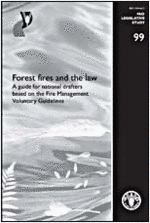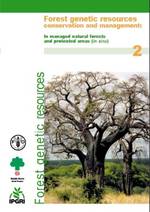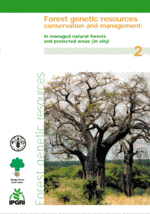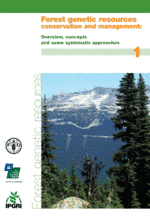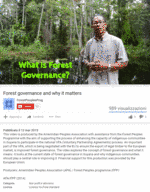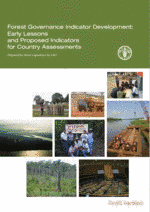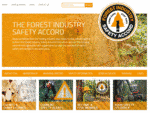Tools
A tool is a resource that supports and guides the implementation of SFM. This section includes all the tools available in the SFM Toolbox, which can be in form of publications, e-learning videos, software etc.
You can browse the Tools through keywords in the free search box or you can narrow the search using the filters on the right side of the page.
COVID-19 continues to have severe impacts on the societies, economies and environment of forest communities. The impacts of the COVID-19 pandemic on forest communities have been shaped by pre-existing social, economic en environmental vulnerabilities. Despite existing vulnerabilities, forest communities have shwon a great deal of resilience. Forest communities have not...
Based on the Fire Management Voluntary Guidelines, the present study seeks to systematically identify the elements of solid legislation on forest fires, capitalizing on the experience gained by FAO in advising on the improvement of forest fire legislation in member countries. Emerging trends (such as common approaches and tools, as...
This manual aims is to demonstrate the benefits attainable through genetic conservation, and to provide practical guidance on in situ conservation strategies and methodologies for planners, decision-makers and professionals involved in forest conservation and forest management. Examples and case studies illustrate some of the differences and complementarities between genetic resources...
Forests are the single most important repositories of terrestrial biological diversity. They provide a wide range of products and services to people throughout the world. Forest trees and other woody plants help support many other organisms, and have developed complex mechanisms to maintain high levels of genetic diversity. Conservation of...
This guide is the first volume in a series of three booklets that deals with the conservation of forest (tree and shrub) genetic resources. This volume gives an overview of concepts and systematic approaches to conservation and management of forest genetic resources. It outlines the need to conserve these resources...
This video is produced by the Amerindian Peoples Association with assistance from the Forest Peoples Programme with the aim of supporting the process of enhancing the capacity of indigenous communities in Guyana to participate in the national VPA (Voluntary Partnership Agreements) process. An important part of the VPA, which is...
This paper is an input to this collective effort to develop a foundational framework of common indicators for application at the country level. It has been enriched by comments from reviewers and discussions during the September 2010 symposium. It discusses the features of the set of indicators generated through the...
The forest industry is one of the most dangerous sectors in which to work in the UK. In the five years up to March 2012, there was an average of 10.4 fatalities per 100,000 workers. This is more than three times the fatality rate for the construction industry. Early in...
Issues related to forest law compliance and governance have received considerable recent attention in various international forums and processes. There remains, however, considerable uncertainty about the extent to which poor forest law compliance and weak governance affect local livelihoods and national economies and how these shortcomings can best be addressed...
Forest law enforcement and governance (FLEG) is a specific and recognizable field of professional practice within forest management. Indeed, a country's FLEG framework provides the foundation for combating forest crime and for realizing the true potential that sustainable forest management (SFM) can contribute to socio-economic development. With increasing demand for...


